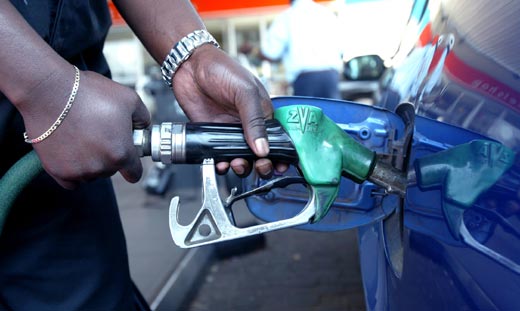Zim back into hyperinflationary regime
Zimbabwe has technically slid into hyperinflation since 2008, when the country recorded its worst inflation, which caused the government to adopt a multi-currency regime and eventually dump the Zimbabwe Dollar.
The latest data from the Zimbabwe National Statistics (ZimStat) shows that monthly inflation rose sharply by 58,8 percentage points in June to 74,5 percent, due to the effects of the rapid depreciation of the Zimbabwean dollar against the US Dollar.
Annual inflation also spiked to 175,8 percent this month, up from 86,5 percent in May. Zimstat measures inflation using a “blended” average of both United States dollars and Zimdollar prices, which analysts and several companies believe distorts the correct inflation position within the economy.
Investment analyst, Enock Rukarwa, told Business Weekly that the inflation rate for the month of June exhibited a hyperinflationary phenomenon.
“On paper, the month of June exhibited a hyperinflationary phenomenon, wherein month-on-month inflation traded at 74.5 percent.
“However, this was simply a correction of a huge mismatch between the official and alternative exchange rates, resulting in official prices reflecting near-perfectly competitive dynamics,” he said.
The assertion was supported by Economist Dr Prosper Chitambara, who said technically Zimbabwe is now officially in hyperinflation as the definition of a monthly inflation rate of more than 50 percent or any rate that exceeds 50 percent implies hyperinflation.
“Therefore, we have reverted to hyperinflation; our numbers for June are showing that. The challenge to coming out of hyperinflation is that prices are going to increase as economic agents take positions, thereby further exacerbating the hyperinflationary environment,” he said.
However, he said recent measures have had some positive effects on the exchange rate. The measures include the liberalisation of the foreign exchange market, which has brought some confidence and the mopping up of excess liquidity, which has had a stabilising effect.
“If we are able to sustain those reforms and support them with fiscal and institutional reforms, it will ensure sustainability in terms of the macroeconomic environment,” he said.
Rukarwa said the appreciation of the local currency in the last three weeks is commendable and that sustainability will be achieved for the long overhaul.
“Impending harmonised elections and fiscal expenditures around agriculture and infrastructure projects pose a threat of an expansionary disposition ahead of year-end for oil’s inherent monetary obligations,” he noted.
The country also witnessed a hyperinflationary period in 2019, which forced the government to re-legalise the use of the US dollar.
According to Equity Axis, hyperinflation is primarily attributed to the rapid depreciation of the local currency, resulting from inadequate currency stability policies that have failed to address fiscal indiscipline and a confidence deficit crisis.
ZimStat figures show the Consumer Price Index (CPI) rose to 566.73 in June from 324.63 in May, with the CPI for food and non-alcoholic beverages having the highest month-on-month inflation rate of 104.2 percent.
This brought the food poverty line to $69 941 and the total consumption poverty line for one person to $91 172.
Steve Hanke, a professor of applied economics at John Hopkins University in the US, recently said the more realistic inflation figure for Zimbabwe was 1 298 percent.
Economist Vince Musewe, said inflationary pressures are going to remain with us as long as we have a multi-currency regime.
“The key driver of inflation, despite other fundamentals being in place, is the USD rate, whose demand is insatiable and the market is always competitive, ready to pay a premium for it. Add to that the pervasive psychological disposition that prefers the USD as a store of value,” he said.
Economist and former member of the Central Bank monetary policy committee (MPC), Eddie Cross, said the measures taken in the past four weeks have stabilised the parallel market rate, and that will last if the government sticks to their new policies.
However, it will be fragile, and the only long-term solution is to make fundamental changes to the market and to start using “our own currency as the main means of exchange,” he said.
Dr Reneth Mano, policy Economist and Chief Executive at the Livestock and Meat Advisory Council (LMAC), said the economy is still in the middle of a very complex macroeconomic stabilisation crisis.
However, over the past two months, the government, through the combined efforts of fiscal and monetary authorities at RBZ, has started the process of implementing some of the common-sense fiscal and monetary policy tightening to remove excess supply of the Zimdollar from the economy and to partially liberalise the foreign currency market.
He said the contractionary macroeconomic policy reforms taken this far have actually significantly reduced the risk of Zimbabwe falling into hyperinflation, provided the government remains resolute in maintaining the current regime of very tight fiscal and monetary policy.
The Government has been passing on a plethora of economic measures meant to curtail inflationary pressures by stabilising the Zimbabwe dollar.
In June alone, the Government increased interest rates from 140 percent to 150 percent and recently compelled companies to pay 50 percent of corporate taxes in local currency.-ebusinessweekly










